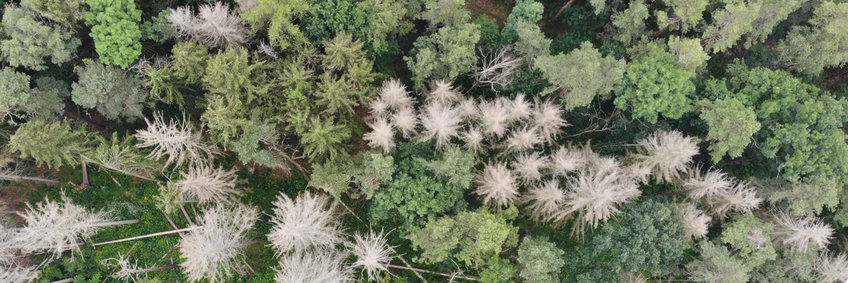
Construction and maintenance of experimental setups
In order to answer the research questions of the group, appropriate instruments often have to be developed or established methods or setups have to be adapted to our specific needs. Currently, my focus is on the measurement of gas emissions from trees, for example emissions of Volatile Organic Compounds (VOCs) and the respiration of trees.
Tree Respiration Chambers


Improving on an older chamber setup, these fully automated measurement systems are now equipped with two sensors measuring both carbon dioxide as well as oxygen concentration, allowing to simultaneously determine the respectable fluxes in and out of tree stems. A quasi-static chamber setup is achieved by periodically flushing of the sample chamber with ambient air via a small pump. Sensor communication, data logging to SD card and pump switching is handled by an Arduino Mega. Data logging includes date, time, temperature, relative humidity, CO2 concentration and O2 concentration, with a user selected logging interval of down to 3 seconds. Powered by a 50 Ah Li-Ion power bank, the run-time of a deployed system is up to 10 days.
The low cost of around 500€ per unit allows for a large number of units being produced within a reasonable budget and to deploy measure on a statistically sufficient batch of trees at the same time.
VOC chamber

To measure and quantify emitted volatile organic compounds (VOCs) released from trees one has to consider their tendency to stick to the surfaces of many materials and therefore the difficulty in transporting them from the point of emission to the sensor or adsorber trap. A low priced material suitable for that task is food-grade PET in the form of oven bags which can be conveniently cut into shape and form to be used as a cover material for a sampling chamber placed onto the tree stem.
Before accumulation the setup is flushed with VOC free synthetic air to remove any residuals. A micro membrane pump circulates the head-space through a flow meter, a buffer volume and a CO2 sensor. The CO2 sensor serves as a indicator for a leak test prior to accumulation and sampling as well as an indicator for a sufficient accumulation time and enrichment of VOCs in the chamber. After the accumulation the gas chromatography–mass spectrometer (GC-MS) sucks about 150mL out of the system for an analysis which causes the reservoir bag to deflate, but hinders a build-up of vacuum in the system.




